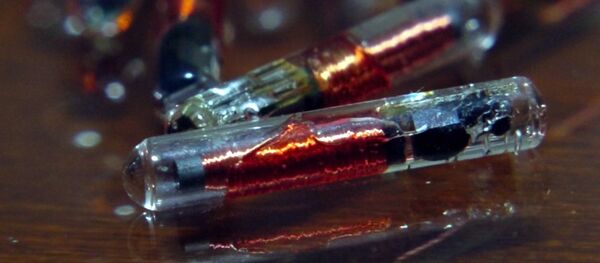The noses of mice, like humans and other mammals, contain a collection of sensory neurons. Each has one receptor to detect a specific odor.
In a study published last week in the journal Cell Reports, the biologists report that they have successfully altered the sensory neurons of mice to express a selected odor receptor, in this case to detect acetophenone, which has a sweet smell similar to jasmine.
When they tested the genetically modified mice, they found that they were 100 times more capable of detecting the presence of acetophenone in water as mice which had not been modified.
In order to change the mouse genome, the researchers injected the DNA for an odor receptor gene into a fertilized egg cell, and an extra string of DNA to the gene sequence in the hope that it would increase the chance of that odor receptor gene being chosen.
The scientists say that their experiment could also help to better understand the human olfactory system, which is poorly understood.
"This is one of our five basic senses, yet we have almost no clue how odors are coded by the brain," lead investigator Paul Feinstein, an associate professor of biological sciences at Hunter College, City University of New York, told Cell Press.
Feinstein said that the Mousensor research could be applied to the development of a "nose on a chip" to help diagnose disease. This consists of olfactory sensory neurons cultured on integrated circuit chips, which would be able to detect specific smells.

The team of researchers, from the City University of New York, told Cell Press that they have received funding from the US Department of Defense to develop some super-sniffing rats that can be trained to detect TNT, and potentially find land mines.
Modified sniffer mice are actually some of the larger animals proposed by scientists seeking to harness olfactory systems found in nature, which are far more sensitive than anything so far manufactured by humans.
Last month researchers at the Washington University in St Louis announced they have received a grant from the US Office of Naval Research to use locusts to develop a new biorobotic sensing system.
They want to use the locusts' highly sensitive olfactory system in the development of a bio-hybrid nose, which could even have defense applications.
"Even the state-of-the-art miniaturized chemical sensing devices have a handful of sensors. On the other hand, if you look at the insect antenna, where their chemical sensors are located, there are several hundred thousand sensors and a variety of types," said Baranidharan Raman, lead investigator on the project.
"We expect this work to develop and demonstrate a proof-of-concept, hybrid locust-based, chemical-sensing approach for explosive detection."





